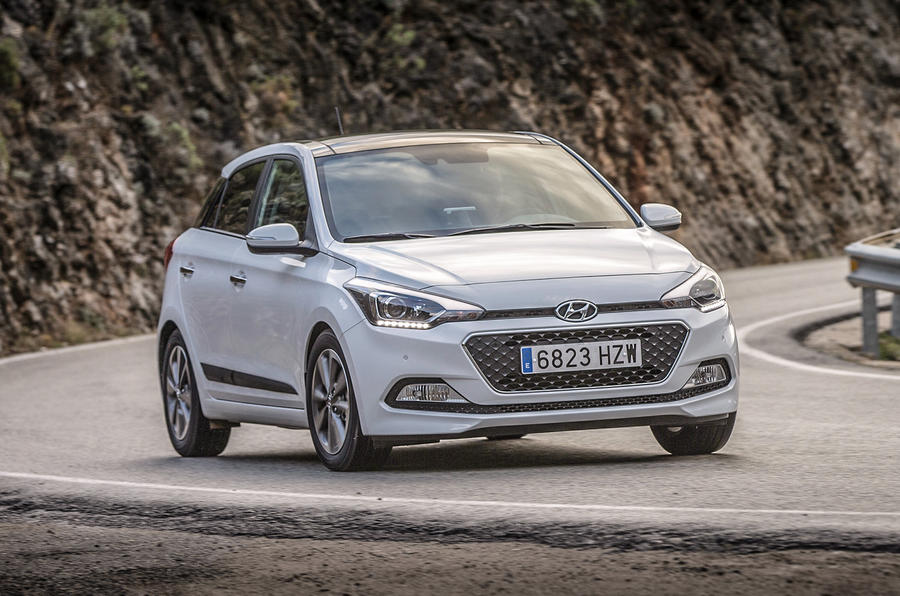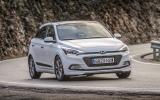What is it?
Last time we reviewed the Hyundai i20, we reckoned it might take the arrival of a 1.0-litre turbocharged engine before it came of age. Well, here it is.
The engine’s a triple, like a lot of 1.0-litre units, and can put out up to 118bhp in some applications, but it has a steady 99bhp here. That’s the same as the i20’s existing naturally-aspirated 1.4-litre unit, so the 1.0 is the joint most powerful in the i20 range.
At only 99g/km, it has the second lowest emissions engine of the line-up and sits behind only the remarkable 84g/km 1.1-litre diesel. The 1.0 is a few hundred pounds cheaper than the diesel; plus it’s not a diesel, which on balance of things as they stand, is likely to make it more attractive.
What's it like?
When we tested the 1.4 we said you’d hardly hear it start. The same is not quite true this time; the three-cylinder has that curious little off-beat hum that triples do. It’s quiet enough, but thrummy, endearingly so, as is often the case.
I can’t remember the last time I tried even a naturally-aspirated small three cylinder with a particularly sharp throttle response (outside a Triumph motorbike). Throwing a turbo on means this 1.0 engine responds with only modest enthusiasm, but it is broadly responsive.
Although peak torque turns up at 1500rpm you’ll want at least 2000 revs on the clock for it to feel like it’s really on your side, but from then it revs cleanly past 6000rpm, and never feels strained.
Quite often we ended up a gear lower than we thought we might – second for roundabouts that would otherwise be third, for example – because of the rangey gearing. The 1.0-litre has a five- rather than a six-speed manual ‘box, whose second cog will see you past 60mph, while at 70mph in fifth the engine’s only spinning at 2500rpm.
Given the engine note is lower than a motor with one additional cylinder would be, sometimes it feels even leggier than that. The gearshift itself is easy, although in the same way as the six-speed, it’s sometimes easy to drop it into third instead of first when you’re stationary, but if you’re positive, it responds amiably.
Dynamically, similar applies. Our test i20 rode on 15in wheels with 65 aspect ratio tyres, so the ride was pretty controlled. Our last i20 test was a while ago and we felt it was a bit sharp over some imperfections. Obviously this is far from a back-to- back test, but it didn’t occur to any testers to complain about harshness this time. Body control is reasonable too.
The i20, however, unlike the Hyundai i30 – and, to an extent, the Hyundai i10 – is a few steps back from the most dynamic cars in this class. The steering’s on no more than amicable terms with the front wheels, and there’s no particular sense of agility.
Should I buy one?
If you like your superminis to have a bit of joie de vivre, you should still look towards a Ford Ford Fiesta, or any one of a half-dozen other cars that give more back than the i20. What the Hyundai does have plenty of, though, is interior space. The rear cabin’s spacious enough for adult-behind-adult seating, and the boot’s spacious, too.
Which is worthy. And what makes up the rest of the package completes the theme: the interior design is unremarkable, as are the material choices, but it all feels durable enough, while the equipment list is strong. If you buy by numbers, the i20’s competitive enough, but beyond that it’s not a car to enjoy.


























Join the debate
Add your comment
Saw my first Genisis today
I have photo but dont seem able to upload it - sorry.
Much like the first gen car,